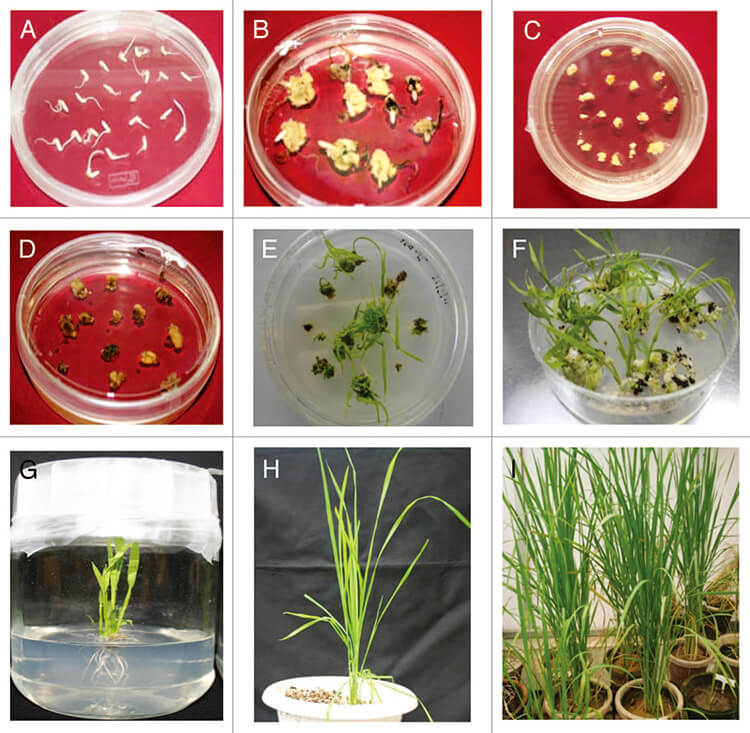Agrobacterium-mediated Transformation of Oryza sativa (Rice)
Lifeasible is a recognized leader in plant biotechnology. We have solid background and expertise for the generation of geneticaly modified plants.
Oryza sativa, or rice, is an important cereal crop that provides staple food for more than half of the world’s population. Therefore, it has been used as a model plant for gene function and regulation studies, aiming at improving agricultural traits such as enhanced resistance against biotic and/or abiotic stresses.
Agrobacterium-mediated transformation is the most common method for introducing genes into O. sativa, due to its high transformation efficiency and low T-DNA copy integration. With rich experience in plant transformation, Lifeasible has developed a variety of fully-fledged Agrobacterium-mediated transformation methods for O. sativa, listed as follows:
- Cultivation of embryogenic calli derived from mature seeds.
- Cultivation of immature embryos.
- Cocultivation of O. sativa calli with Agrobacterium on filter papers moistened with liquid media.
- Cultivation of suspension-cultured cells for improved transformation efficiency.
- Cultivation and vacuum infiltration of pierced embryonic apical meristem derived from soaked mature seeds. The inoculated seeds can grow to maturation (T0 plants) to set seeds (T1 plants) in pots under nonsterile conditions, which circumvents tissue culture process.
- In planta inflorescences dip method.
With our excellent scientists and experts, as well as comprehensive collaborations with renowned research institutes and companies, Lifeasible provides our worldwide clients with tailored protocols for O. sativa transformation, including:
- Optimized tissue culturing and plant growth conditions.
- A wide selection of O. sativa genotypes (japonica varieties: Nipponbare, Zhonghua11, Akdong, Suweon330, Anjungbyeo, Taipei309, Cheniere, and Katy; indica varieties: 9311, Minghui86, Minghui63, Kasalath, ASD16, White Ponni, BR29, and IR64).
- Multiple Agrobacterium strains: GV3101, AGL-1, EHA101, EHA105, C58C1, etc.
- Optional selection markers: Kanamycin, Hygromycin, Phosphinothricin, G418, etc.
Lifeasible is happy to share our featured technologies, service plans, collaboration options and more to plant scientists and researchers all over the world.
 Figure 1. Agrobacterium-mediated transformation of callus derived from mature seeds of indica rice (Sahoo and Tuteja, 2012).
Figure 1. Agrobacterium-mediated transformation of callus derived from mature seeds of indica rice (Sahoo and Tuteja, 2012).
Reference:
- Sahoo R. K. and Tuteja N. (2012) Development of Agrobacterium-mediated transformation technology for mature seed-derived callus tissues of indica rice cultivar IR64, GM Crops and Food: Biotechnology in Agriculture and the Food Chain, 3 (2), 123-128.
For research or industrial raw materials, not for personal medical use!
 Figure 1. Agrobacterium-mediated transformation of callus derived from mature seeds of indica rice (Sahoo and Tuteja, 2012).
Figure 1. Agrobacterium-mediated transformation of callus derived from mature seeds of indica rice (Sahoo and Tuteja, 2012).